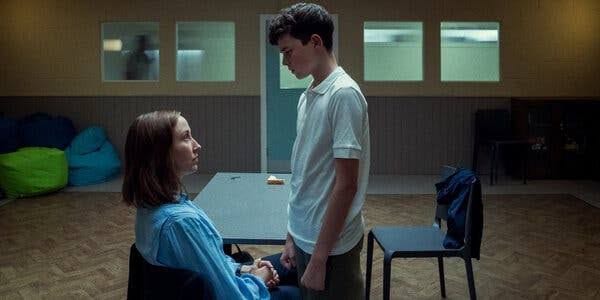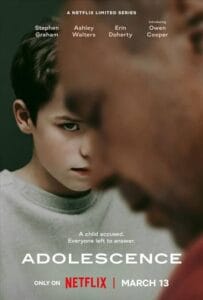If you think growing up was difficult, Netflix’s latest limited series, Adolescence, makes one thing clear—it’s even harder now. This gripping British miniseries, spanning just four episodes, landed on Netflix last Thursday and has already taken over conversations worldwide.

With Adolescence sitting at the top of Netflix’s show rankings, the series has quickly gained attention. According to reports, it pulled in 24.3 million views within its first four days. But beyond the numbers, what’s really drawing people in? The show’s intense storytelling, an unsettling plot, and a cast that brings raw emotion to the screen.
A Chilling Story That Hits Close to Home
At the heart of Adolescence is Jamie Miller, a 13-year-old boy accused of a shocking crime—the murder of a classmate. Owen Cooper, a newcomer to the acting world, delivers a haunting performance in the lead role. His parents, played by Stephen Graham and Christine Tremarco, are left shattered, trying to make sense of a situation that no family ever expects to face.
Unlike traditional crime dramas that rely on explosive action or shocking twists, Adolescence builds its suspense in a different way. The show thrives in its quiet moments—the long, heavy silences, the uncomfortable glances, and the simple but devastating conversations.
One episode is entirely dedicated to Jamie speaking with a child psychologist, as they attempt to answer the question that has left detectives and his parents desperate for clarity: Why? The tension builds throughout the 52-minute runtime, leaving the audience feeling physically drained by the time the credits roll.
A Fresh Take on the Thriller Genre
The storytelling approach in Adolescence is strikingly different from other crime dramas. If last year’s Baby Reindeer shocked audiences with its disturbing yet personal journey, Adolescence takes a different path. It doesn’t just show trauma—it makes viewers experience it alongside the characters.
The moment Jamie is arrested unfolds almost like a game, with different people taking their turns to speak, move, and react. The result? A scene that feels painfully real, dragging viewers into the slow, grinding reality of such a life-altering event.
In an unexpected twist, Jamie is absent in the final episode. Instead of focusing on the accused, the show shifts attention to his family—the people left behind to deal with the consequences. The absence of his character in this crucial moment only makes the pain feel more profound.
Why Adolescence Feels So Real—And Terrifying
For parents watching, Adolescence is more than just a TV show—it’s a nightmare brought to life. While past generations may have dismissed such stories with a “That could never happen to my child” mindset, today’s world is different. The show taps into a growing fear: What if this could happen to my child?
That’s what makes Adolescence so unsettling. It doesn’t rely on exaggerated villains or far-fetched scenarios. Instead, it presents a realistic story—one that is all too possible, yet easy to overlook until it’s too late.
Final Thoughts
There’s a reason why Adolescence is the Netflix series that has everyone talking. With its intense storytelling, raw performances, and an unsettling look at modern-day adolescence, it leaves a lasting impression.
Whether you watch it out of curiosity or because the buzz is too loud to ignore, one thing is certain—Adolescence will stay with you long after the final episode ends.





